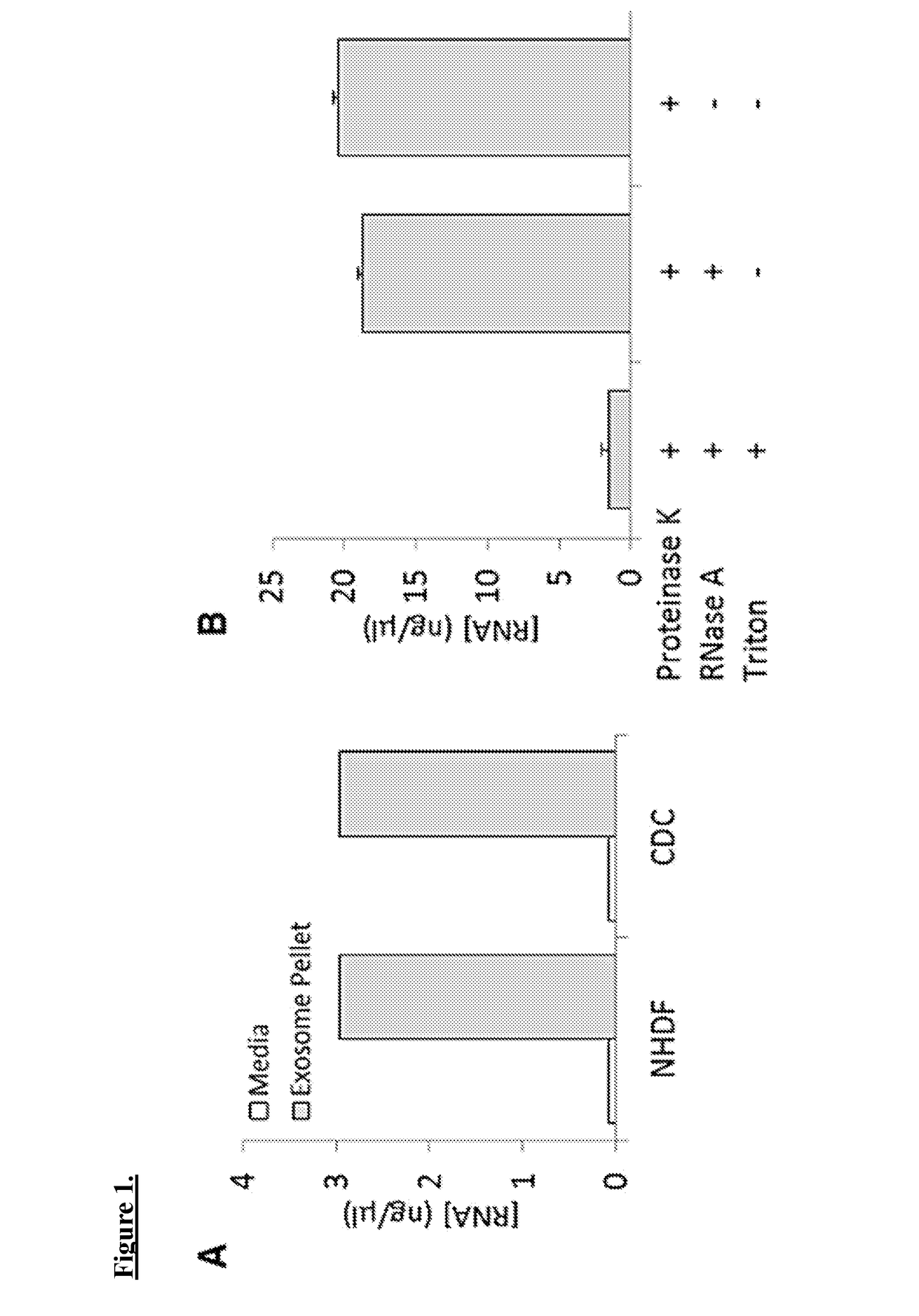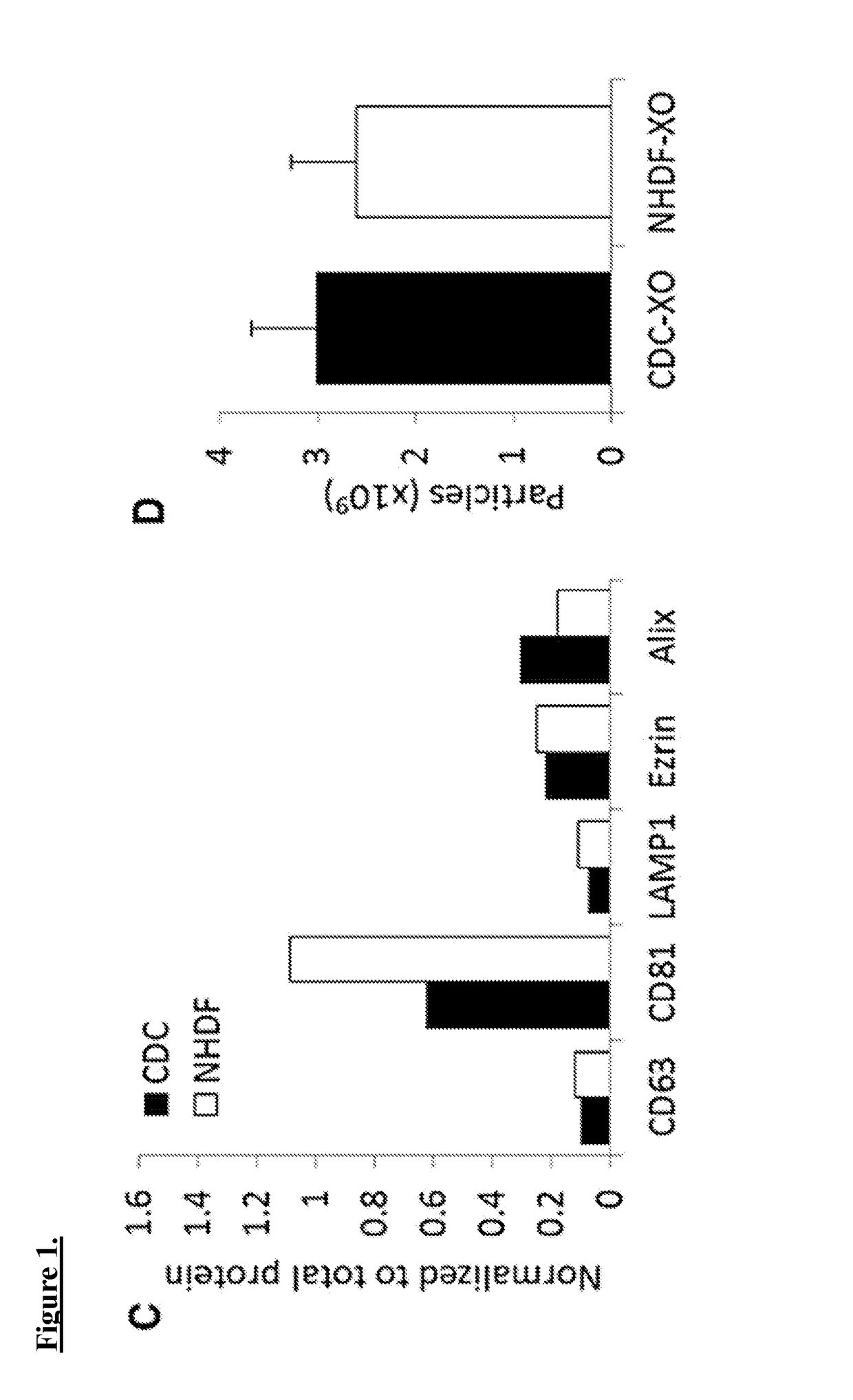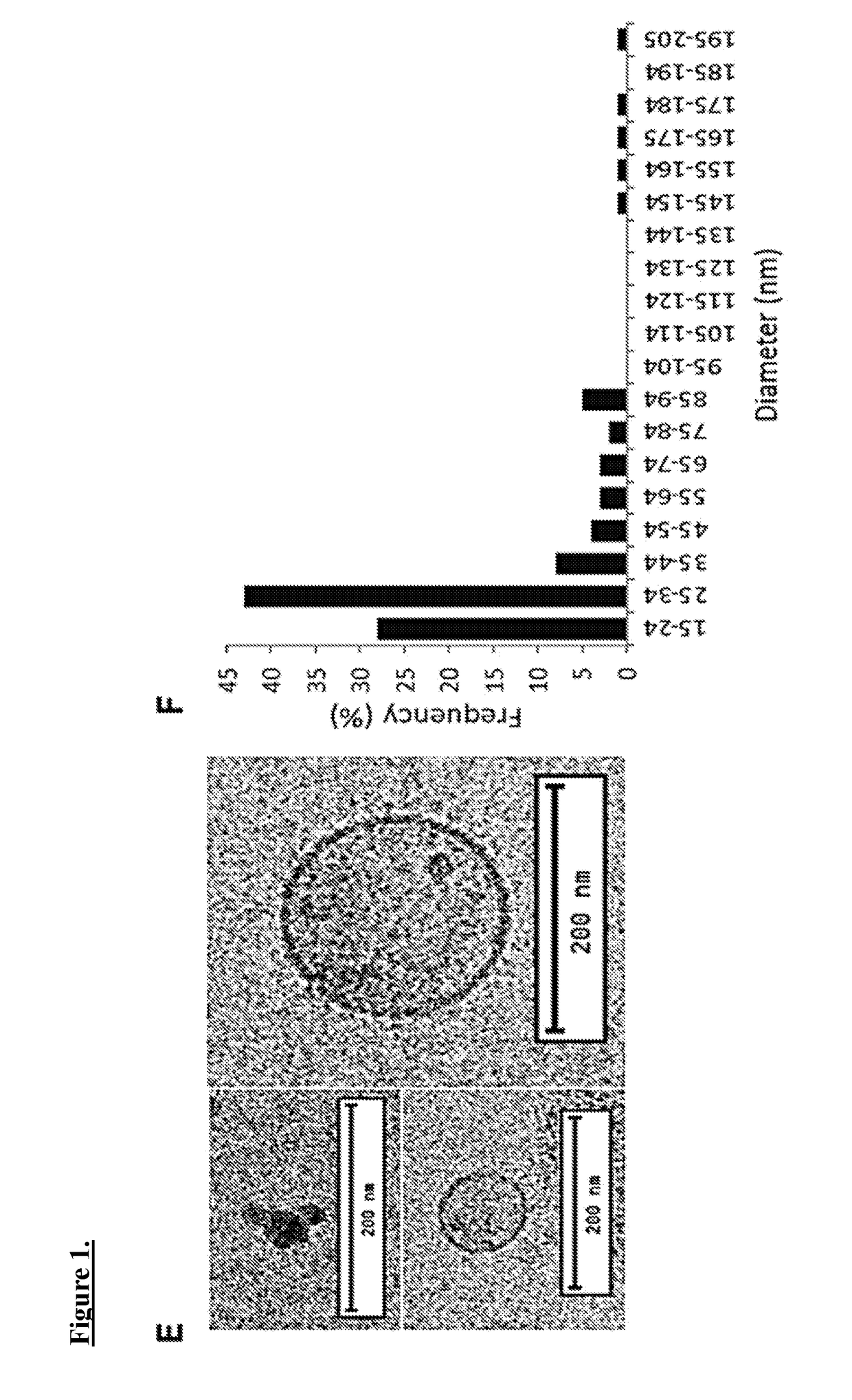Cardiosphere-derived cells and exosomes secreted by such cells in the treatment of muscular dystrophy
a technology of exosomes and cells, applied in the field of cells and their extracts, can solve the problems of high risk of hospitalization, no treatment has been proven effective, and progression of hf, and achieve the effects of reducing inflammation, reducing fibrosis, and increasing mitochondrial function
- Summary
- Abstract
- Description
- Claims
- Application Information
AI Technical Summary
Benefits of technology
Problems solved by technology
Method used
Image
Examples
example 1
CDC Culture
[0106]Endomyocardial biopsies from the right ventricular aspect of the interventricular septum are obtained from healthy hearts of deceased tissue donors. Cardiosphere-derived cells were derived as described previously. See Makkar et al., (2012). “Intracoronary cardiosphere-derived cells for heart regeneration after myocardial infarction (CADUCEUS): a prospective, randomized phase 1 trial.”Lancet 379, 895-904 (2012), which is fully incorporated by reference herein.
[0107]In brief, heart biopsies are minced into small fragments and briefly digested with collagenase. Explants were then cultured on 20 mg / ml fibronectin-coated dishes. Stromal-like flat cells and phase-bright round cells grow out spontaneously from tissue fragments and reach confluence by 2-3 weeks. These cells are harvested using 0.25% trypsin and cultured in suspension on 20 mg / ml poly d-lysine to form self-aggregating cardiospheres. cardiosphere-derived cells (CDCs) are obtained by seeding cardiospheres onto...
example 2
Media Conditioning and Exosome Purification
[0108]Exosomes are harvested from CDCs at passage 4. One can also isolate exosomes from normal human dermal fibroblasts (NHDF), cells that have been previously utilized as controls providing no salutary benefit, as a control.
[0109]CDCs and NHDFs are conditioned in serum-free media for 15 days at 100% confluence. Aspirated media is then centrifuged at 3,000×g for 15 min to remove cellular debris. Exosomes were then isolated using Exoquick Exosome Precipitation Solution.
[0110]Exosome pellets are resuspended in the appropriate media and used for assays. Expression of the conserved exosome marker CD63 is verified using ELISA. RNA content of exosome pellets can also be quantified using a Nanodrop spectrophotometer. For generation of miR-146a-deficient exosomes, CDC are transfected in suspension with miRIDIAN miR-146a hairpin inhibitor or a miRIDIAN hairpin control and seeded on to fibronectin-coated flasks. Exosomes are isolated from serum-free ...
example 3
Exosomal RNA Degradation
[0111]Exosomal RNA degradation is performed by suspending exosome pellets in 2 ml of
[0112]PBS. To one sample, 100 ml of Triton X-100 (Sigma Aldrich) is added to achieve 5% triton concentration. Exosomes are treated with 0.4 mg / ml RNase A treatment for 10 min at 37° C. Samples are further treated with 0.1 mg / ml Proteinase K for 20 min at 37° C. RNA is purified from samples using an microRNA isolation kit. RNA levels are measured using Nanodrop.
PUM
| Property | Measurement | Unit |
|---|---|---|
| Mass | aaaaa | aaaaa |
| Therapeutic | aaaaa | aaaaa |
Abstract
Description
Claims
Application Information
 Login to View More
Login to View More - R&D
- Intellectual Property
- Life Sciences
- Materials
- Tech Scout
- Unparalleled Data Quality
- Higher Quality Content
- 60% Fewer Hallucinations
Browse by: Latest US Patents, China's latest patents, Technical Efficacy Thesaurus, Application Domain, Technology Topic, Popular Technical Reports.
© 2025 PatSnap. All rights reserved.Legal|Privacy policy|Modern Slavery Act Transparency Statement|Sitemap|About US| Contact US: help@patsnap.com



